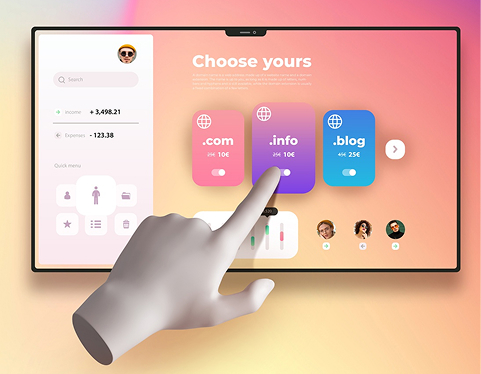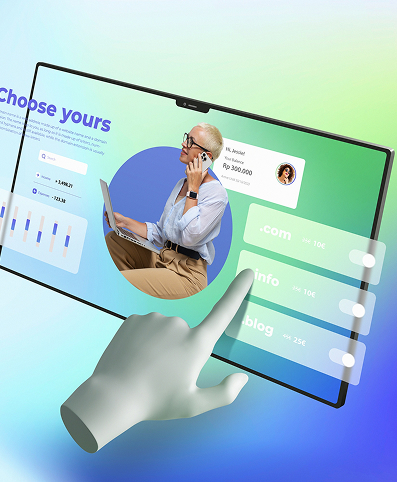As digital has become the first point of contact for most customers, businesses can no longer treat their website as a static brochure. Today, a brand’s website is its front door, one that welcomes, guides, and influences potential customers. That’s why a thoughtful website design strategy, rooted in user experience (UX), is essential to building trust, driving conversions, and staying relevant in a competitive digital landscape.
But what does “putting user experience first” actually mean in practice? It’s about building digital environments that don’t just look good but work intuitively. It means considering who your users are, what they want, and how they move through your website, not just what you want to say.
Let’s break down what a UX-first approach to website design looks like, and how it can significantly improve user engagement and business outcomes.
Designing for the User, Not Just the Brand
It’s tempting to design a website based purely on branding goals (colors, taglines, and product displays.) But if your visitors can’t find what they’re looking for or feel lost navigating the site, they’ll leave, no matter how beautiful it looks.
A user-first strategy begins by identifying your primary audiences. For many businesses, this could include end consumers, professionals, and partners or distributors. Each of these groups has different needs, expectations, and digital behaviors.
For example, when Century Ply approached us to revamp their digital presence, the goal wasn’t just a design facelift. It was to create a more intuitive, user-aligned experience.
Together, we mapped the needs of three distinct user groups: direct consumers, design professionals, and trade partners. The website was then strategically restructured with dedicated sections and interactive tools tailored to each audience, without compromising the brand’s visual and functional coherence.
The result? A significant drop in bounce rate from 43% to 26% and a noticeable increase in average session time, clear indicators that users were not only staying longer but also engaging more meaningfully.
Build with Empathy, Not Assumptions

Too often, websites are designed based on internal assumptions rather than real user data. But creating a seamless experience requires empathy, a deep understanding of what your users feel, want, and struggle with.
User journey mapping, behavior tracking, and usability testing can reveal friction points and unmet needs. These insights should guide everything from menu structure to the placement of calls-to-action (CTAs). Even small UX refinements (like reducing the steps to contact a sales team or simplifying a product comparison feature) can lead to measurable improvements.
In the case of Century Ply, tools like a visualizer for laminates, a plywood calculator, and a color finder were integrated (not as flashy features, but as problem-solving utilities.) These tools helped users make confident decisions and kept them coming back, leading to a steady rise in return visits.
As digital has become the first point of contact for most customers, businesses can no longer treat their website as a static brochure. Today, a brand’s website is its front door, one that welcomes, guides, and influences potential customers. That’s why a thoughtful website design strategy, rooted in user experience (UX), is essential to building trust, driving conversions, and staying relevant in a competitive digital landscape.
Responsive, Accessible, and Inclusive
User-first design is also about inclusivity. A website should perform well across devices, be accessible to users with varying needs, and adapt to different browsing conditions. Today, over 70% of web traffic in India comes from mobile devices. If your design isn’t responsive, you're already losing a majority of your potential audience.

Information Architecture: Clarity Over Complexity
Content hierarchy and navigation design can make or break a user’s journey. Information should be grouped logically, with intuitive pathways that help users reach their goals in as few clicks as possible. Avoid clutter, keep language simple, and maintain a consistent design language.
Unifying scattered microsites or campaign pages into one cohesive ecosystem, something many growing brands need to consider, improves consistency and strengthens brand perception. It also creates a single, reliable point of access for users, making the journey smoother and more efficient.
Animation, microinteractions, and dynamic design can enhance UX, if used purposefully. But overuse or misplaced effects can distract and disorient users. The key is to design interactions that guide, reassure, or delight users without overwhelming them.
Subtle transitions between pages, hover states that hint at clickable elements, or smooth scroll effects can provide a sense of flow. When done right, these touches add polish and professionalism without compromising usability.
UX design doesn’t stop at launch. It's an ongoing process that requires tracking, learning, and iterating. Metrics like bounce rate, time on page, click-through rates, and heatmaps can offer real-time feedback on what’s working, and what’s not.
In the Century Ply brand case, careful monitoring post-launch revealed which tools were gaining traction. This data didn’t just validate the design decisions but also provided direction for future improvements.
Putting user experience at the center of your website design strategy isn’t a trend, it’s a necessity. In an environment where attention is scarce and expectations are high, brands that prioritize ease, clarity, and utility will win the long game.
Ultimately, websites should not just inform, they should enable, guide, and build trust. Whether you’re a consumer navigating choices, a designer sourcing specs, or a dealer placing bulk orders, a user-first approach ensures every visit delivers value.
The best websites aren’t just beautiful. They’re useful. They’re human. And they’re built with the user in mind, at every click, scroll, and interaction.






